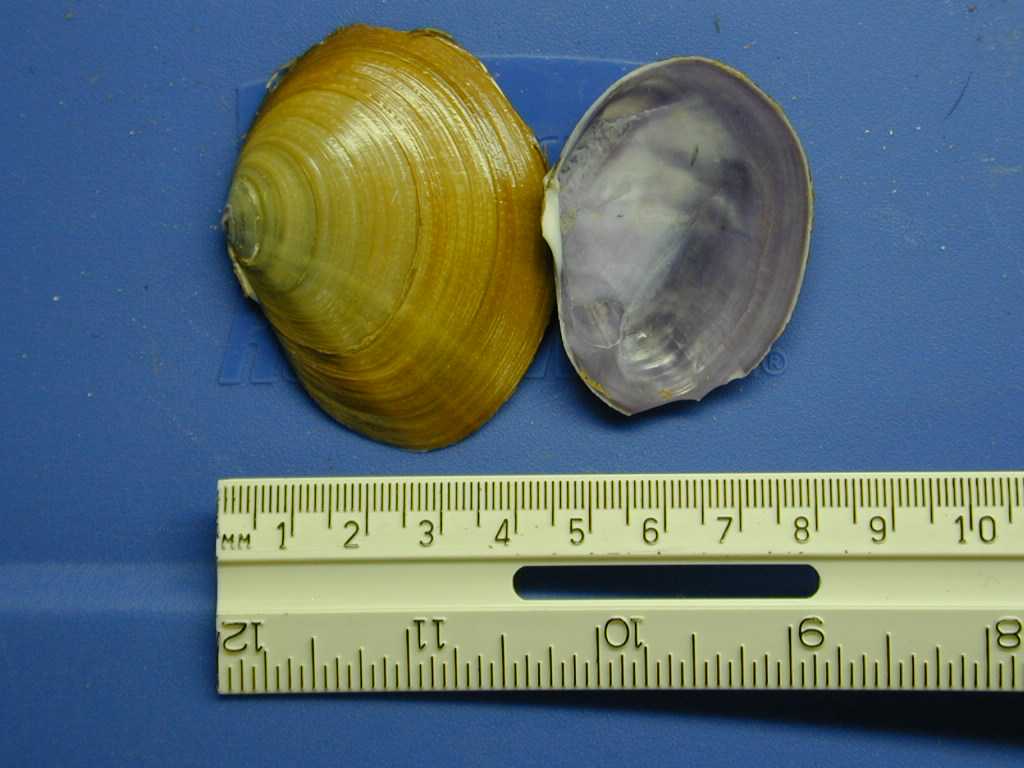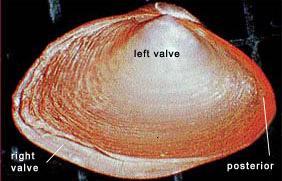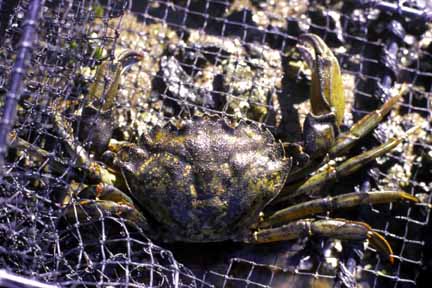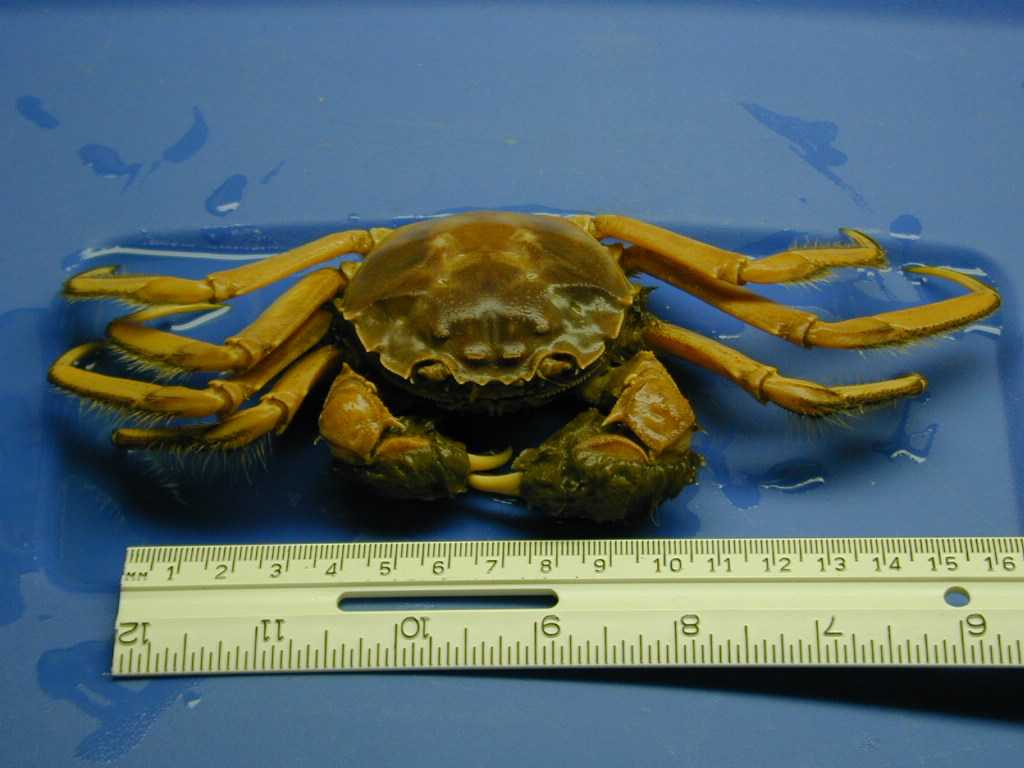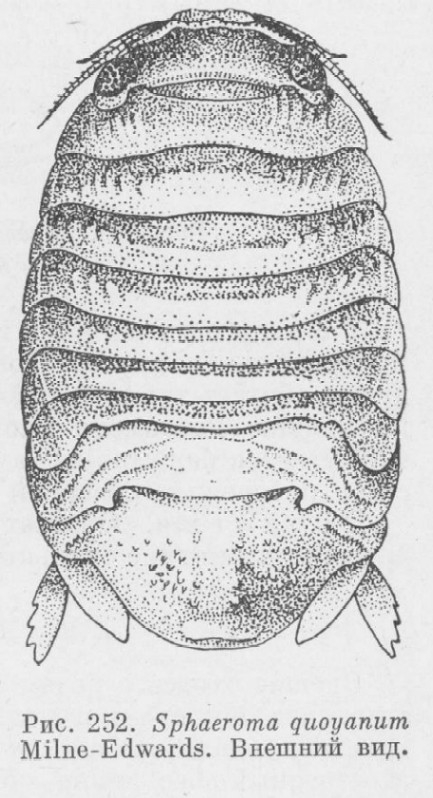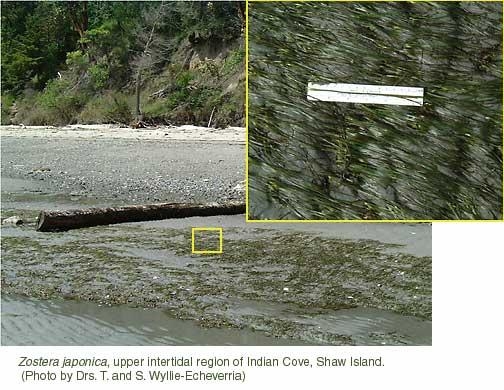 |
Japanese eel grass Zostera japonica was probably introduced as live packing material for Japanese oysters. Its thin, narrow blades and high intertidal distribution distinguishes it from the native Zostera marina. Zostera japonica provides habitat for invertebrates and food for dabbling ducks. Its roots trap sediment, thus raising the elevation of mudflats. Birds help spread this species to other estuaries. Zostera japonica is presently found in the Coquille, Coos, Yaquina, Siletz, Salmon, Tillamook, Netarts, and Nehalem estuaries and Young's Bay. (Photo courtesy of Sandy Wylie-Echeveria) Jim Kaldy (541 867 4026)
|

